Overhead crane for sale Guinea, ie, overhead bridge crane, gantry crane, jib hoist and cranes, hot sale 1 ton, 2 ton, 5 ton, 10 ton, 80 ton, design for you.
Overview of Guinea's Industrial Landscape
Guinea is a nation endowed with abundant natural resources, nestled along the western coast of Africa, With a diverse economic landscape that encompasses mining, agriculture, manufacturing, and more, Guinea stands as a promising hub for industrial growth. However, unlocking the full potential of these sectors requires the right tools, and one such tool that plays a pivotal role in Guinea's industries is the overhead crane.
Importance of Overhead Cranes in Various Sectors
Overhead cranes, often referred to as bridge cranes or gantry cranes, are indispensable in the world of heavy lifting and material handling. Their versatility and efficiency make them invaluable assets across a spectrum of industries. In Guinea, where mining, agriculture, and construction flourish, overhead cranes serve as the backbone of operations, enabling the seamless movement of goods, machinery, and materials.
From the towering bauxite mines to bustling port facilities and burgeoning construction sites, the significance of overhead cranes cannot be overstated. These mechanical marvels simplify complex tasks, enhance productivity, and ensure safety in environments where precision and power are paramount.
Purpose and Scope of the Guide
In this comprehensive guide, we embark on a journey to demystify overhead cranes in the context of Guinea's industrial landscape. Our goal is to empower you, whether you're a seasoned industry professional or a newcomer seeking the right overhead crane for your project. We will delve into the intricacies of overhead cranes, explore their various types and applications, and provide valuable insights into selecting the perfect crane to meet your specific needs.
In the pages that follow, we will cover crucial aspects such as assessing your overhead crane requirements, understanding the diverse sectors of Guinea's economy, and deciphering the unique challenges posed by the nation's climate and regulatory environment. Additionally, we will offer guidance on installation, maintenance, and cost considerations to ensure that your investment in an overhead crane is not only productive but also cost-effective.
Guinea's industrial future holds immense promise, and with the right overhead crane, you can navigate the challenges and opportunities that lie ahead. So, let's embark on this journey together, as we uncover the world of overhead cranes and find the perfect solution for your industrial needs in Guinea.
Types of overhead cranes for sale Guinea
What Are Overhead Cranes? Before delving into the intricacies of overhead cranes and their applications in Guinea's industrial sectors, let's start with the basics. What exactly are overhead cranes?
Overhead cranes, also known as bridge cranes or overhead traveling cranes, are robust, industrial machines designed for material handling and lifting heavy loads. Unlike traditional cranes, overhead cranes are mounted on elevated runways, allowing them to move horizontally along the length of the runway while hoisting loads vertically. This design offers exceptional versatility and precision in handling various materials and goods.
Overhead Crane for sale Guinea
Guinea's diverse industrial landscape demands different types of overhead cranes to cater to specific requirements. Here are the main types you'll encounter:
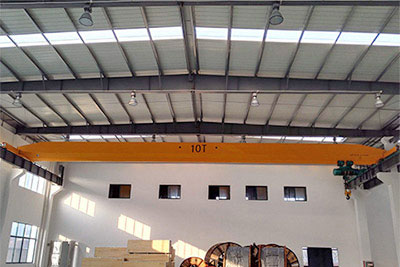
LD Single Girder Overhead Crane
- Lifting Capacity:1~32t
- Span:7.5~31.5m
- Lifting Height: Custom Design
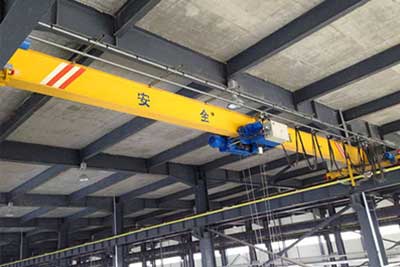
European Standard Overhead Crane
- Lifting Capacity:1~50t
- Span:7.5~31.5m
- Lifting Height: Custom Design
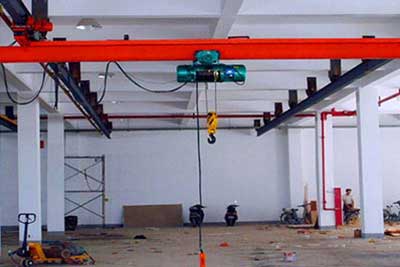
Lx Suspension Overhead Crane
- Lifting Capacity:1~10t
- Span:3-31.5m
- Lifting Height: Custom Design
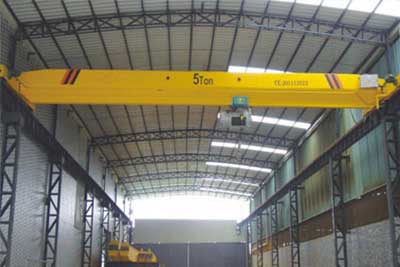
LB Explosion Proof Electric Overhead Crane
- Lifting Capacity:1-32T
- Span:7.5-31.5m
- Lifting Height: Custom Design
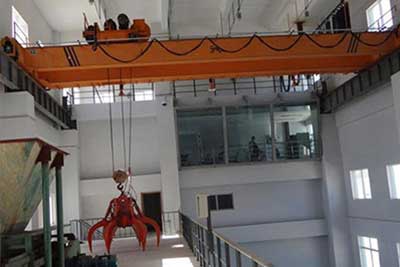
Double Girder Overhead Crane with Grab
- Lifting Capacity:5-20T
- Span:10.5-31.5m
- Lifting Height: 6-18m
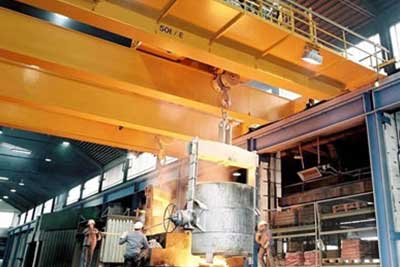
Foundry Double Girder Overhead Crane
- Lifting Capacity:5-320T
- Span:10.5-31.5m
- Lifting Height: 6-18m
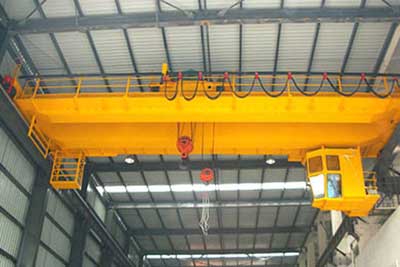
Double Girder Explosion-proof Overhead Crane
- Lifting Capacity:5-320T
- Span:10.5-31.5m
- Lifting Height: 6-18m

Double Trolly Electric Overhead Crane
- Lifting Capacity:5-450T
- Span:10.5-31.5m
- Lifting Height: 6-18m
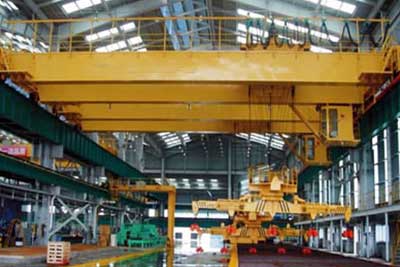
Electromagnetic Double Girder Overhead Crane
- Lifting Capacity:5-450T
- Span:10.5-31.5m
- Lifting Height: 6-18m
Gantry Cranes for sale Guinea

Single Girder Hoist Gantry Crane
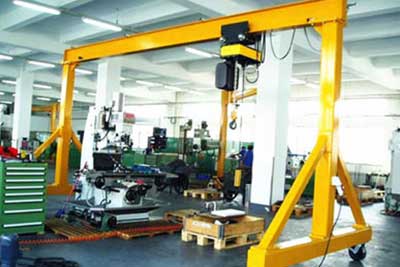
Portable Gantry Crane for Sale
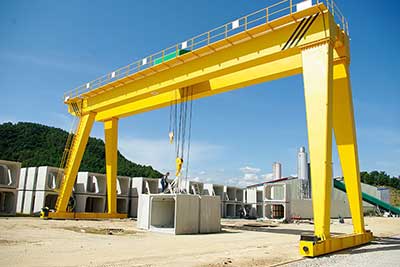
A-type Double Girder Gantry Crane

U-type Double Girder Gantry Crane
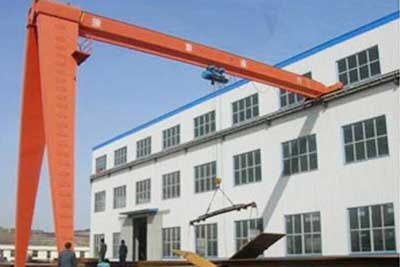
BMH Semi Gantry Crane
Light duty gantry cranes for sale Guinea
Light duty portable gantry crane for sale Guinea, up to 10 ton. The most economical gantry crane solutions for sale, with high movibility.
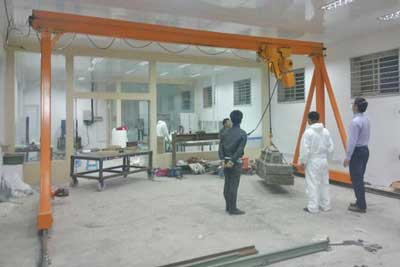
rail travelling portable gantry crane for sale Guinea
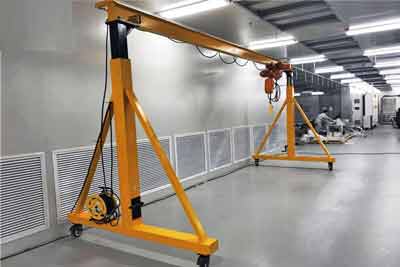
Height adjustable gantry crane for sale Guinea
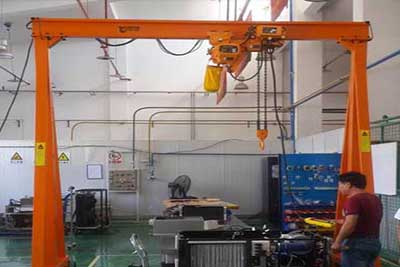
Fixed height gantry with electric chain hoist
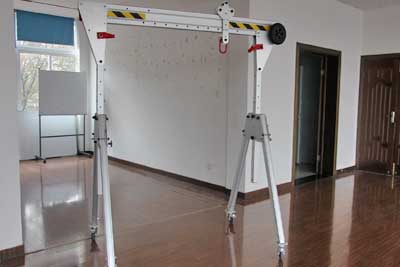
Folable gantry crane with roller travelling design
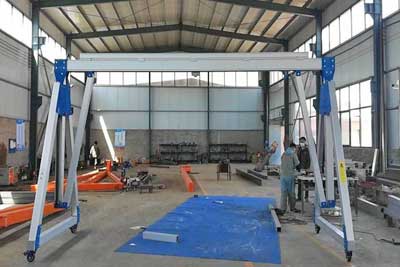
Light duty gantry crane for sale Guinea
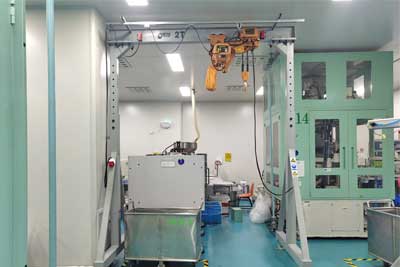
Height adjustable gantry crane for sale Guinea
Main types of jib cranes for sale Guinea
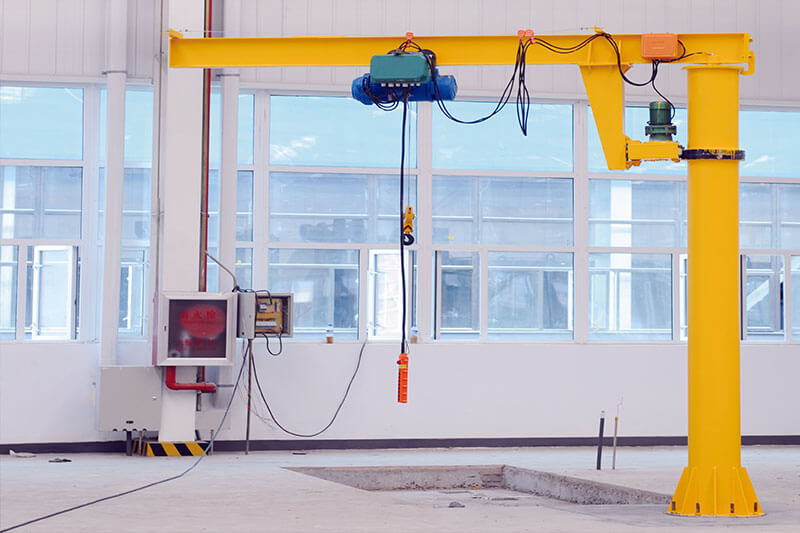
Pillar mounted jib crane for sale Guinea
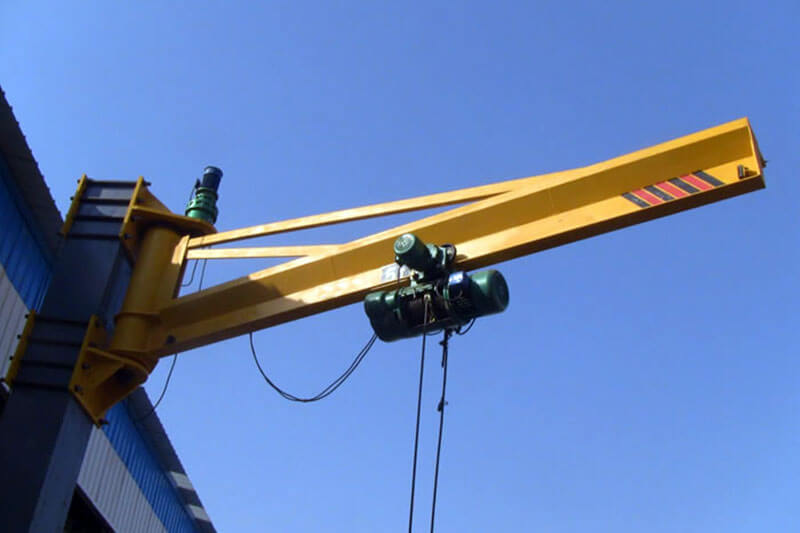
Wall mounted jib cranes for sale Guinea
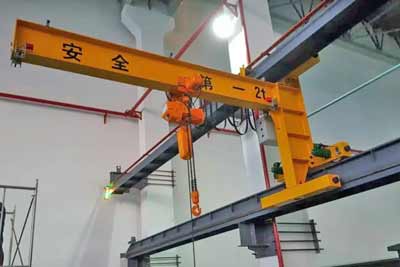
Wall travelling jib cranes for sale Guinea
Assessing Your Overhead Crane Needs
Identifying Industrial Sectors in Guinea
Before delving into the specifics of overhead crane selection, it's crucial to understand the diverse industrial sectors in Guinea. Each sector has unique demands, and identifying which one aligns with your project is the first step in determining your overhead crane needs.
- Mining: Guinea is rich in mineral resources and is one of the world's largest producers of bauxite. Other minerals, including iron ore, gold, diamonds, and aluminum, are also mined. Overhead cranes used in the mining sector are typically heavy-duty models designed for lifting and transporting large quantities of minerals and ore.
- Agriculture: Agriculture plays a significant role in Guinea's economy. The country produces a variety of crops, including rice, maize, millet, sorghum, and cassava. Overhead cranes may be used in food processing facilities, particularly for tasks like handling bags of agricultural products.
- Food Processing: Guinea has some food processing industries that handle agricultural products. Overhead cranes in this sector may be used for lifting and moving raw materials, ingredients, or finished products within processing plants. In the mining sector, specialized overhead cranes are used for various tasks, including the loading and unloading of mining trucks, transporting ore to processing facilities, and handling materials in the mining process. These cranes are typically heavy-duty and may be customized for specific mining operations.
- Construction: Given the infrastructure development in Guinea, the construction sector may use overhead cranes for tasks such as lifting and placing construction materials, steel beams, and concrete elements.
- Metallurgical Industry: Guinea's mineral wealth has the potential to support metallurgical industries for processing metals like aluminum and iron. Overhead cranes in metallurgical plants may be used for tasks such as handling molten metal or moving metal products.
- Port and Logistics: Guinea's coastline and ports play a crucial role in the export of minerals and other goods. Container handling cranes, such as rubber-tired gantry (RTG) cranes or rail-mounted gantry (RMG) cranes, are used in port facilities for loading and unloading containers and cargo.
The choice of overhead crane type in each sector would depend on specific requirements, load capacities, and operational needs. Different sectors may require various configurations, such as single girder or double girder cranes, gantry cranes, or jib cranes, depending on the nature of their operations.
Determining Specific Application Requirements
Once you've identified the relevant industrial sector, it's essential to determine your specific application requirements for the overhead crane:
- 1. Load Capacity -Consider the weight of the materials or goods you need to lift. Ensure that the crane's load capacity aligns with your project's demands, accounting for both current and potential future needs.
- 2. Span and Reach -The span and reach of the crane should match the dimensions of your workspace. Measure the distance the crane must cover horizontally and vertically to ensure it can reach all required locations.
- 3. Environmental Factors (e.g., Climate and Weather) -Guinea's climate can vary, with coastal areas experiencing high humidity and potential exposure to saltwater. If your crane operates in such conditions, you may need corrosion-resistant features and appropriate insulation for extreme temperatures.
- 4. Regulatory Compliance -Compliance with national and international safety and operational regulations is non-negotiable. Guinea has its own set of regulations governing crane operations, and it's crucial to ensure your crane meets these standards.
In the upcoming sections of this guide, we'll explore how to select the right overhead crane that aligns with your specific needs, taking into account the unique challenges and opportunities presented by Guinea's industrial landscape.
Selecting the Right Overhead Crane
Now that you've assessed your overhead crane needs and understood the unique demands of Guinea's industrial sectors, the next step is selecting the right overhead crane. This section will provide you with valuable insights into making an informed choice.
Working with Local Suppliers
One of the first steps in selecting the right overhead crane is to establish a partnership with local crane suppliers and manufacturers in Guinea. These experts understand the nuances of the local industrial landscape and can provide valuable guidance.
Working with local suppliers offers several advantages:
- -Regional Expertise: Local suppliers are well-versed in Guinea's industrial sectors and can recommend crane solutions tailored to your specific needs.
- -Access to Support and Maintenance: Proximity to suppliers ensures quick access to maintenance and support services, minimizing downtime.
- -Compliance with Regulations: Local suppliers are familiar with Guinea's regulatory requirements and can help ensure that your crane meets all necessary standards.
Customization Options
Every industrial application is unique, and your overhead crane should be customized to match your specific requirements. Local suppliers often offer customization options to ensure that your crane meets your project's demands.
Consider customization in terms of:
- -Load Capacity: Ensure that the crane's load capacity aligns with your project's needs.
- -Span and Reach: Customize the crane's span and reach to fit your workspace dimensions.
- -Control Systems: Choose control systems that suit your operator's preferences and the complexity of your tasks.
- -Safety Features: Incorporate safety features such as limit switches, emergency stop buttons, and overload protection.
- -Environmental Considerations: If your crane operates in challenging environments, discuss customization options for corrosion resistance, extreme temperature tolerance, and rain protection.
Load Capacity and Crane Specifications
Selecting the right load capacity and crane specifications is crucial to ensure efficiency and safety. Consult with your local supplier to determine the following:
- -Load Capacity: The crane's load capacity should comfortably handle the heaviest loads in your application. Ensure you consider both the static and dynamic loads.
- -Duty Cycle: Define the crane's duty cycle, which reflects how frequently and intensively it will be in use. Cranes come in various duty classes, from light to heavy-duty.
- -Hoisting Speed: The speed at which the hoist raises and lowers loads should align with your project's productivity requirements.
- -Trolley Speed: Customize the trolley speed for precise positioning of materials.
- -Bridge Speed: Determine the bridge speed based on your workspace layout and material handling needs.
Special Features for Guinea's Conditions
Guinea's environmental conditions can present unique challenges. Ensure that your selected overhead crane incorporates special features to tackle these challenges effectively:
- 1. Corrosion Resistance -In coastal areas or environments with exposure to saltwater, corrosion resistance is essential. The crane should be constructed with materials that resist corrosion to prolong its lifespan.
- 2. Extreme Temperatures -Guinea's climate can vary, with high temperatures in some regions. Crane components and electrical systems should be designed to operate reliably in extreme temperatures. Adequate cooling systems and insulation may be necessary.
- 3. Rain Protection -Heavy rainfall can pose risks to crane operations. Consider overhead cranes with rain protection features to prevent water damage to electrical components and ensure safe operation even in wet conditions.
- 4. Compliance with National Regulations -Guinea has its own set of regulations governing crane operations, safety, and standards. It's imperative that your selected overhead crane complies with these national regulations. Your local supplier should have in-depth knowledge of these requirements and ensure that the crane meets all necessary standards.
Overhead Crane Installation and Maintenance
Selecting the right overhead crane is just the beginning of your journey. Ensuring its efficient and safe operation over the long term requires careful installation, ongoing maintenance, and adherence to safety standards.
Crane Installation Considerations
- 1. Site Preparation -- Ensure that the installation site is well-prepared, level, and able to support the crane's weight and the loads it will carry. Verify the adequacy of the building structure, including runway beams and support columns.
- 2. Professional Installation -- Engage a certified installation team with experience in overhead crane setup. Follow the manufacturer's installation guidelines and consult with local experts to ensure compliance with national regulations.
- 3. Electrical and Power Requirements -- Ensure that the electrical supply to the crane meets the crane's power requirements, including voltage, phase, and frequency. Install appropriate electrical connections and consider backup power sources for uninterrupted operation.
Safety Standards and Inspection
- 1. Compliance with Standards - Guinea has specific safety and operational regulations for cranes. Ensure that your crane installation adheres to these national standards. Regularly review and update safety procedures in accordance with evolving regulations.
- 2. Inspection and Certification - Schedule routine inspections by certified crane inspectors to ensure safe operation.
- Perform thorough inspections before each use, checking for wear, damage, and proper functionality.- Keep detailed records of inspections, maintenance, and repairs.
Routine Maintenance Practices
- 1. Lubrication and Cleaning -- Establish a regular lubrication schedule for critical crane components to reduce friction and wear. Keep the crane and its components clean to prevent debris and dirt buildup.
- 2. Component Replacement -- Proactively replace worn or damaged components to prevent breakdowns and accidents. Maintain a spare parts inventory to minimize downtime.
- 3. Operator Training -- Ensure that crane operators are well-trained in safe operation and familiar with emergency procedures. Provide ongoing training to keep operators updated on best practices.
Troubleshooting and Repairs
- 1. Diagnostic Tools -- Invest in diagnostic tools and equipment to identify issues early. Train maintenance personnel to use these tools effectively.
- 2. Emergency Response -- Develop an emergency response plan for crane malfunctions or accidents. Ensure that all personnel know how to respond to emergencies and evacuate the area if necessary.
- 3. Repair and Upgrades -- Engage qualified technicians for repairs and upgrades. Stay informed about advancements in crane technology that could improve safety and efficiency.
By focusing on proper installation, adhering to safety standards, implementing routine maintenance practices, and being prepared for troubleshooting and repairs, you can ensure the longevity and safety of your overhead crane in Guinea's industrial environment. In the next section, we will explore cost factors and budgeting to help you manage the financial aspects of your crane investment.
Cost Factors and Budgeting
Investing in an overhead crane is a significant decision that involves various costs, both upfront and ongoing. To make an informed investment, you must consider these cost factors and develop a budget that aligns with your project's requirements and financial capabilities.
Initial Costs
- 1. Crane Acquisition -- The initial cost of acquiring the overhead crane, including the crane itself, hoists, trolleys, and associated equipment. Customization costs for specialized features and requirements. - Costs for delivery and installation, which may include site preparation and electrical work.
- 2. Regulatory Compliance -- Expenses related to ensuring that the crane meets all national safety and operational regulations. Costs for obtaining necessary permits and certifications.
Operating Costs
- 1. Energy Costs -- The ongoing cost of powering the crane, including electricity consumption. Energy-efficient cranes may result in lower operating costs.
- 2. Maintenance and Repairs - Budget for routine maintenance, inspections, and potential repairs to keep the crane in optimal condition. Costs for replacement parts, lubricants, and cleaning materials.
- 3. Operator Training - Expenses related to training crane operators in safe and efficient operation. Ongoing training to keep operators updated on best practices and safety procedures.
Long-Term Cost Considerations
- 1. Lifecycle Costs - Consider the total cost of ownership over the crane's expected lifespan, factoring in acquisition, operating, and maintenance costs. Evaluate the crane's efficiency and durability to make informed decisions about long-term costs.
- 2. Depreciation - Assess the depreciation of the crane's value over time and its impact on your budget. - Consult with financial experts to understand tax implications related to depreciation.
Financing and Procurement Options
- 1. Financing -- Explore financing options such as loans, leases, or equipment financing to spread the initial acquisition cost over a manageable period.Consider the interest rates and terms associated with financing.
- 2. Procurement Options -- Compare pricing and terms from different crane suppliers and manufacturers.Negotiate with suppliers to secure the best deal that aligns with your budget.
- 3. Total Cost of Ownership (TCO) Analysis -- Conduct a TCO analysis to assess all costs associated with the crane over its lifetime, including acquisition, operation, and maintenance.Use TCO analysis to make informed decisions about the most cost-effective crane solution.
By carefully considering these cost factors, developing a comprehensive budget, and exploring financing and procurement options, you can make a well-informed decision about investing in an overhead crane that meets your project's needs while remaining financially sustainable. In the final section of this guide, we will conclude by summarizing key points and emphasizing the importance of selecting the right overhead crane for your industrial needs in Guinea.













 Single Girder Hoist Gantry Crane
Single Girder Hoist Gantry Crane Portable Gantry Crane for Sale
Portable Gantry Crane for Sale A-type Double Girder Gantry Crane
A-type Double Girder Gantry Crane U-type Double Girder Gantry Crane
U-type Double Girder Gantry Crane BMH Semi Gantry Crane
BMH Semi Gantry Crane rail travelling portable gantry crane for sale Guinea
rail travelling portable gantry crane for sale Guinea Height adjustable gantry crane for sale Guinea
Height adjustable gantry crane for sale Guinea Fixed height gantry with electric chain hoist
Fixed height gantry with electric chain hoist Folable gantry crane with roller travelling design
Folable gantry crane with roller travelling design Light duty gantry crane for sale Guinea
Light duty gantry crane for sale Guinea Height adjustable gantry crane for sale Guinea
Height adjustable gantry crane for sale Guinea Pillar mounted jib crane for sale Guinea
Pillar mounted jib crane for sale Guinea Wall mounted jib cranes for sale Guinea
Wall mounted jib cranes for sale Guinea Wall travelling jib cranes for sale Guinea
Wall travelling jib cranes for sale Guinea